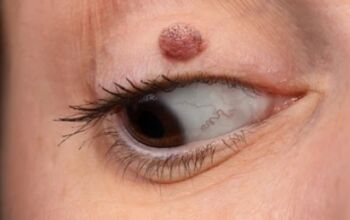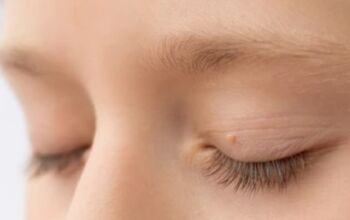Eyelid lump and tumour
Lumps and growths can occur around the eyelid region. They may have been present since a long time ago, or they could have just arisen recently (a few weeks to a few months ago).
What are the causes?
Common causes are benign lesions such as:
- moles (naevi).
- warts (papillomas).
- benign pigmented lumps (seborrheic keratoses)
- skin (epidermal) cysts
Less common causes are malignant tumours/cancers due to chronic sun-damage (such as basal cell carcinomas) or sebaceous cell carcinomas (a rare type of cancer that begins in an oil gland in the skin).


How do we decide if a lump should be removed?
Some lumps may cause irritation or interfere with vision of the affected eye. The lump could also be a source of cosmetic deformity to the affected eyelid, especially if it is significantly large and causing a change to the shape of the eyelid contour.
While most lumps are benign, we need to have an index of suspicion for possible cancerous change resulting in skin cancers around the eyelid (such as basal cell carcinoma or melanoma), particularly when one has noticed:
- a recent change in the appearance of the lump (such as change in colour, shape or ulceration).
- a recent increase in size.
- bleeding or abnormal crusting.
Higher risk individuals include those with extensive sun exposure, fair-skinned individuals, history of previous skin cancer, irradiation or the immunocompromised.
What is the treatment?
Simple shave excision removal can be done for a benign innocuous lump as a simple day procedure without sutures. For deeper and larger lumps, sutures and a simple flap reconstruction may be needed.
For tumours, a satisfactory tumour-free margin of removal needs to be achieved. This is then followed by reconstructive surgery of the affected eyelid.
